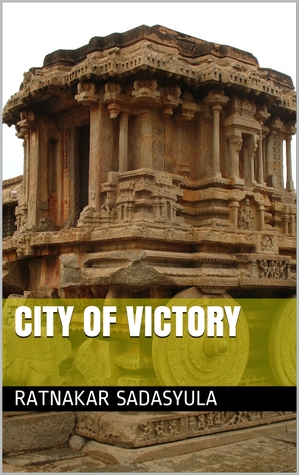City of Victory: The Rise and Fall of Vijayanagara - Review by Abhishek Desikan
City of Victory is a concise historical summary of the rise and fall of one of Bharat’s greatest empires, the Vijayanagara empire. The author provides a blow-by-blow account of the battles, culture, lifestyle, arts, and other aspects of the kingdom, which spanned over 300 years.
Before delving into the formation of the empire, we are given a brief historical account of the various Islamic invasions and their steady capture of different kingdoms in the north before proceeding south.
As the Khalji and Tughlaq dynasty conquered the Deccan region by defeating the Hoysala, Kakatiya, and Yadava kingdoms, the Vijayanagara kingdom was founded in 1336 to fight the Muslim invasion of South India.
Harirhara I and Bukka Raya founded this empire under the able guidance of their patron saint Vidyaranya Swamy. From its founding, the empire reached its peak under the great Krishna Deva Raya and ultimately met its fall at the battle of Talikota.
The murky waters of managing a kingdom, the constant battles between their primary opponents, the Bahamani Sultans and other Hindu kings to gain territory, and the various alliances formed make it a stimulating read. All is not black and white when it comes to managing an empire, and at multiple points, the Vijayanagara kings allied against Bahamanis to defeat a common enemy.
The empire commanded a vast army, artillery, cavalry, and war elephants at its peak. It delivered crushing defeats to the Bahamanis and other kingdoms, thus playing a crucial role as the Hindu bastion of the South. One also sees a recurring theme of forts and the Tungabhadra river being the most vital parts to be captured and where the power center lay.
Many Vijayanagara kings, most notably Krishna Deva Raya, were patrons of arts, including literature and Carnatic music, and this period is considered the golden age of Telugu literature. The capital city Hampi was a thriving cultural center, and some of the most outstanding scholars and writers of the era assembled there. There was also a flourishing sea trade with China, and exports included cotton, spices, jewelry, and perfumes.
The author also explains that the caste system, untouchability, and sati were quite common. However, it did not play a significant role in the administration and the military. Although the rulers were primarily Shaivites, there was religious toleration for all religions.
The fall of this great empire comes at the battle of Talikota, which the author primarily attributes to the short-sightedness of the rulers, post-Krishna Deva Raya’s demise, in trying to play the Sultans against each other. The Bahamanis waged a joint campaign against the empire. They razed the city, its temples, and its forts to the ground and massacred thousands of people in the process.
A fascinating tale of the rise and fall of a Hindu empire from which many lessons can be learned and adapted for today’s circumstances.

Also published here.